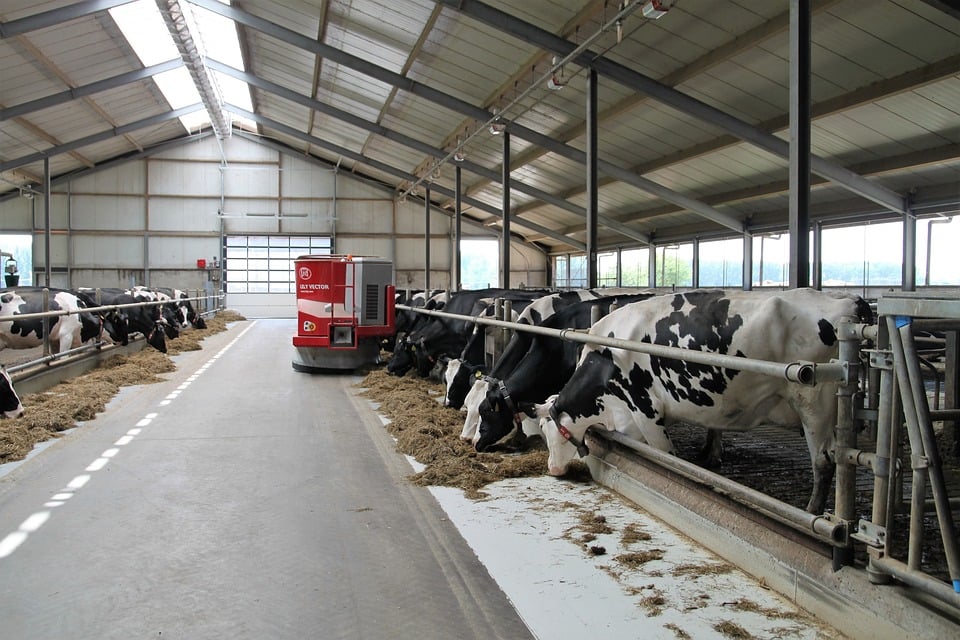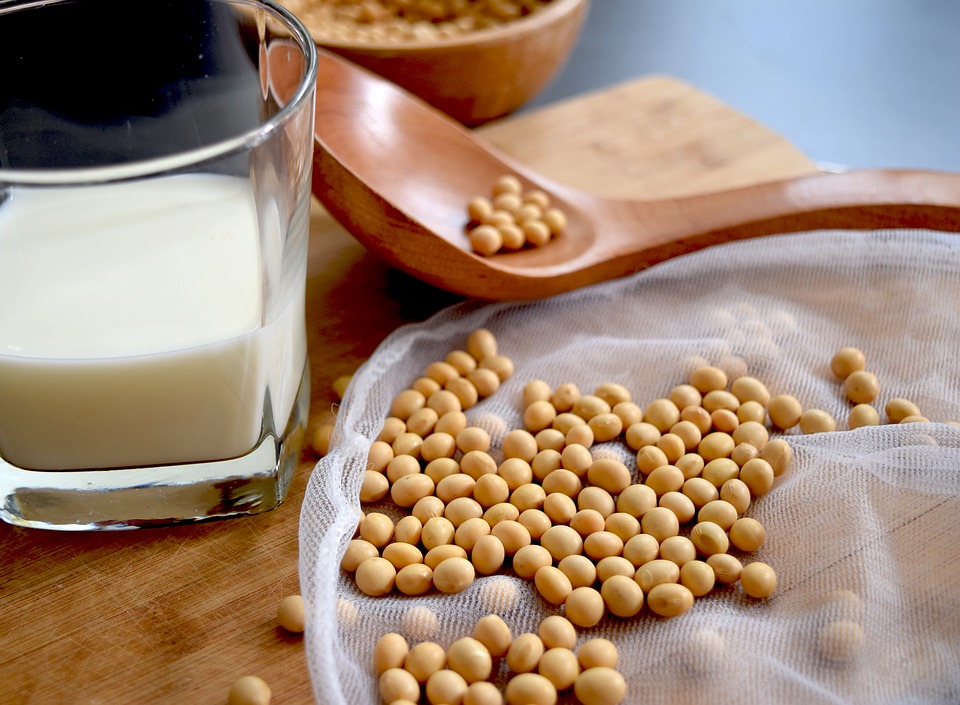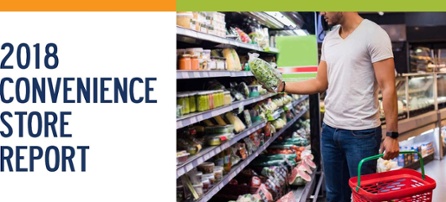As with burgers and fast food, there has been a recent plant-based surge in the dairy case, particularly with beverages such as soy and almond milk (though the dairy industry would prefer you reserve the term 'milk' for their products). Indeed, the global dairy alternative drink market is expected to bring in $16.3 billion this year, and when expanded to include dairy-free food alternatives like yogurt and cheese, the market is expected to be at $30 billion by 2024.
And while it has not gained quite the same traction in the United States as it has in other countries—it remains something of a niche product for the allergic and the ethical—there are signs this is changing. So follow us as we run a competitor analysis of the grocery dairy case to understand the move toward dairy alternatives, assess its staying power, and determine what Americans will be putting in their oatmeal (no, not their cereal) in the years to come.
GenZ Shunning Dairy Till the Cows Come Home
Though not without its lifelong standard bearers—often found on or near liberal arts campuses—the dairy-free trend is today being driven by the nation's youngest consumers into the mainstream. Consider that Generation Z (people born between 1995 and 2012) consumes 550% more dairy-free beverages than generations prior. That's a lot of soy lattes and almond milk teas.
Why such a jump? Well, it’s not just that there are more vegans among this ascendant generation (though there are), it's that they eat healthier in general. Young enough to have parents who were influenced by the last twenty years of nutritional science and dietary recommendations, GenZ seems to make healthier corporal and environmental choices as a baseline, and for better or worse this includes dairy alternative beverages like soy, almond, and rice milk.
Thanks in no small part to GenZ's tastes, the US dairy alternative beverage market is expected to account for 40% of the nation's milk market with around $11 billion in annual sales by 2021. That's not just a splash here and there, that's a slow takeover of the dairy case.
But it's not as though the soymilk shelf has become an exclusive teenage hangout or anything (no fidget spinners required); nowadays there are a wide variety of shoppers in the dairy alternative space.

They Found Their Aroma Lacked A Certain Appeal
First and foremost (and hopefully downwind) there are the lactose intolerant—those who lack the enzymes necessary to digest lactose and who consequently experience moderate to extreme gastric distress when consuming dairy. Lactose intolerance's effects on sufferers and the air quality in their immediate vicinity are well known—why do you think it's called cutting the cheese?
While it is believed to affect up to 75% of the global population, US estimates vary greatly, conservatively as low as 25% but everybody knows this number is increasing as immigrants from less dairy-rich nations bring their sensitivities along with their dreams. Regardless, its domestic sufferers have historically turned to one of a few strategies to limit its expression: power through the distress with a little help from the local drugstore, consuming Lactaid and other lactose-free milks, and increasingly, turning to alternate sources and removing dairy entirely.
Indeed, according to a recent Cargill study, 35% of those who chose dairy alternative beverages do so because of lactose intolerance, and additional 26% due to a similar sensitivity or allergy.
As we learn more about, and pay more attention to, our bodies' unique digestive needs, people are shunning ingredients heretofore considered unshunnable (come on, nobody saw gluten free bread coming!)
But it's not just those looking to avoid an embarrassing case of the vapors. There are also the vegans, whose relative paucity means they alone cannot drive this trend, but whose dietary preferences are increasingly mainstreamed. As David Sprinkle of Packaged Facts notes, “Vegetarians and vegans together account for less than 15% of all consumers and their numbers do not grow very rapidly, but a growing number of consumers identify themselves as flexitarian or lessitarian, meaning that they’ve cut back on their consumption of animal-based foods and beverages. It is this group that is most responsible for the significant and ongoing shift from dairy milk to plant-based milk."
Whether it is for ethical reasons or environmental (which, interestingly also have to do with flatulence, but in this case that of the dairy cow), vegans, allergy suffers, and health-conscious consumers alike are all turning to the power of the plant.
Sour Alternative Milk?
It's not all good news for soy and company, however, and it remains to be seen how far this trend can go, particularly with the increasing popularity of organic and open-pasture dairy products.
First, 47% of Cargill's sample were turned off by alternate milk's cost: consumers perhaps wonder why a plant-based milk costs nearly as much as the kind that requires cows (it's because of subsidies, btw). Regardless, a burgeoning dairy alternative market will need to address these concerns, likely with a competitive pricing analysis.
Also, it seems that the alternatives just don't taste like the real thing. Cargill's study found that 63% prefer actual milk to its plant imitators but avoid it for other reasons, because, here's the thing about dairy: it tastes very good. Creamy, buttery, milky---these are popular adjectives for a reason, ways to describe something that comes close to dairy’s silken standard. Dairy is delicious, plain and simple and we aren't breaking news here, which helps to explain why, even among those limiting their dairy intake, only 7% did so because they didn't like the taste.
For over three times as many, 24%, it was avoiding growth hormones and for another 24% to reduce saturated fat. So while dairy might have to convince consumers its product is wholesome and healthy after decades of industrial agriculture, the alternatives must convince consumers they are delicious.

Nutritious, Delicious, and Functional: Pick Two
Finding the middle ground between delicious and nutritious is the American culinary dream of the new millennium, and it seems many consumers are attempting to strike that balance—according to Cargill, 50% of those who drink dairy alternative beverages do so in tandem with milk-based products.
Milk’s nutritional profile is hard to compete with. Packed full of protein, calcium, and potassium—three things we need in abundance—milk is nature's perfect food, produced to provide developing young with the full nutritional package. But it's a perfect food for another species (hey, we make our own!), which brings in digestive, environmental, and even ethical concerns for many consumers.
For those looking to quell the bottom burps, going dairy-free makes sense but dairy alternative beverages are perhaps not the heartiest ingredients for a healthy lifestyle. According to a recent study out of McGill University, of the popular alternatives, only soy rivals dairy in terms of protein and broader nutritional profile. Sure, not everybody drinks these beverages to add protein to their diets, but for those looking to replace or supplement milk's place in their diet, rice, coconut, and even current cafe favorite almond milk all fall short.
Natural, Artificial, and Everything In-between: A Competitor Analysis
Then there is the comparatively artificial and industrial nature of these products. Though soy milk dates to the 3rd Century BC, it has, needless to say, gone through some significant changes since then. First, dairy alternative drinks are often loaded with added sugars, something consumers and even the Obama-era FDA have targeted as tantamount to dietary treason. You see, soybeans, rice, and the like are not naturally sweet, so making them palatable to the typical shopper (sure, some of us love our unsweetened soymilk but we know we are special) requires some sugaring up.
Even organic sugar cane extract is still empty added calories, and though it helps to thicken the final product, further additives are required. These range from the plant starch (benign) to inulin (gastric distress) to carrageenan (inflammation), and are paired with gums, stabilizers, and preservatives. That's a lot of hard-to-pronounce stuff in a time where label simplicity is paramount.
Also, in order to achieve their stellar, milk-rivaling nutritional profiles, the beverages are fortified with calcium, potassium, and other vitamins and minerals lacking in their original forms—one admittedly biased author described sweetened, flavored dairy alternatives as akin to washing down a multi-vitamin with sugar water.
So, be prepared to get dizzy watching the pendulum of public taste swing back and forth on this one. As with butter and margarine, our continually-evolving understandings of healthy, ethical, and natural will cause these markets to shift back and forth.
Let's hope they're running some good market research. With dairy case battle lines being drawn, a competitor analysis, at the very least, is in order.


